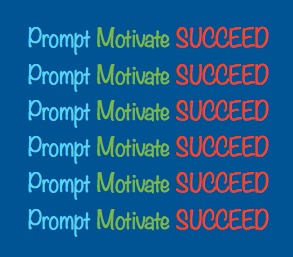- Home
- Teaching Strategies
- Prompting
Prompting for More Effective Learning

Prompting is a technique that makes learning much easier for children with autism. It works well for just about any subject or skill you are teaching.
My son often needs this kind of help. Sometimes he needs a hint, cue, or reminder to action. For example, if he becomes distracted when I want him to tie his shoes, a little tap on his arm is often all he needs to get him going again.
How Will This Technique Help Children Learn?
Here are a few ways...
- When they forget the answer, they may need a reminder. This gives them more repetition, helping them learn the information or skill faster. This is important since some children with autism learn more slowly than other children do.
- Their greater success with learning will encourage them to keep trying.
- Cues and reminders can keep them on task. Children with autism are sometimes easily distracted. If they are highly distractible, they may need a lot of these helps to stay with the lesson.
Types of Prompts
Here are a few types of prompts you may find helpful, but this is not a complete list.
Verbal
I think you'll recognize that we use spoken cues or reminders all the time. Here are some examples:
- Simply telling them the answer. This also provides repetition.
- Giving part of the answer to help them remember the rest of the answer.
- Demonstrating how to articulate a word.
- Giving a fill-in-the-blank cue to help them remember an answer. For example, if you are asking them what the boy in the picture is doing and they don’t respond, you could say, “The boy is,” and then see if they can give an answer.
Visual
This can involve showing an object or picture to help them remember the answer. For example, if the question is “What animal likes to bark,” you could show them a picture of a dog.
Visual cuing could also involve highlighting words or pictures.
Gestural
Suppose you ask the question, “What do we do with an apple?,” and they don’t know how to respond. You could make the sign for “eat” if they know sign language. Or you could pretend to eat an imaginary apple.
Positional
Positional prompts provide a cue for the next step in a procedure by placing a reminder close by.
Suppose you want to teach your teenage son how to prepare a simple snack. To remind him of what he will need to do next, such as getting a bowl, you might place the bowl close to him.
Modeling
Modeling is such an effective technique that most of us are familiar with it. It involves performing the task in front of them so they can see how to do it.
Sometimes it will be easier for them to see you perform a task than it will be for them to understand spoken instructions.
Physical
These cues can range from very intensive to least intensive. The degree that you use will depend on what they need.
The hand-over-hand technique is more intensive and is often needed when a child is starting to learn a new skill or needs a lot of help.
This method is effective in showing them how to do something with their hands, such as writing. As the name suggests, you place your hand(s) over their hand(s) and help them perform a task, such as writing a letter or word.
As your child gets better at writing, you may graduate to less intensive help, such as holding their wrist down against the paper to keep them from holding their wrist up when they write.
The least intensive physical prompt might be simply touching their hand to remind them to continue writing.
This process of reducing cues is known as prompt fading. Learn more here about how to use the prompt fading technique to help children maintain the skills they've learned without needing continued prompting .

Some Important Points to Remember
- As a general rule, give the least amount and the least intensive help needed.
- Before prompting, give your child a chance to answer or to do the task first if you think they may be able to respond correctly. Once you know they don’t know the answer, then you can offer help.
- Cues that may work well for one child may not work as well for another. You can find out which ones will work best for your child through trial and error. Also knowing their strengths and weaknesses will help you select the right approach for them.
Keep These Ideas in Mind For When You Need Them
You may even wish to print this page if you want to keep this list as a reminder for yourself. You could think of it as your own prompt. After all, don't we all need help from time to time?
Using these techniques will make it so much easier for them to master the information and skills required to reach their potential.
If you have questions or if you would like more information about prompting and how to use this technique, check out this article by Autism Classroom News & Resources.
New! Comments
Have your say about what you just read! Leave me a comment in the box below.